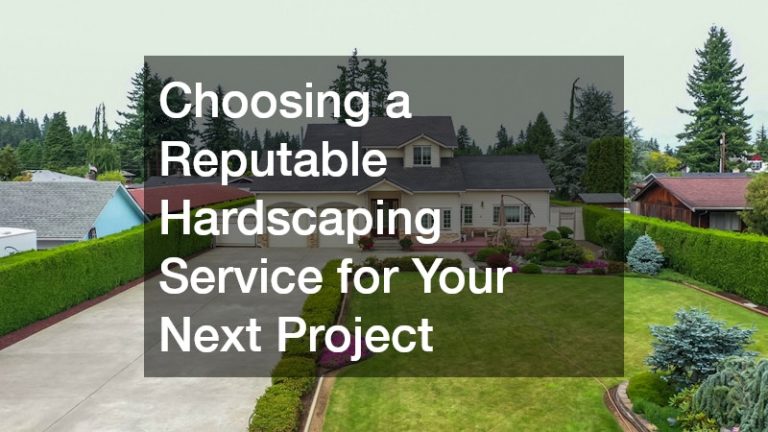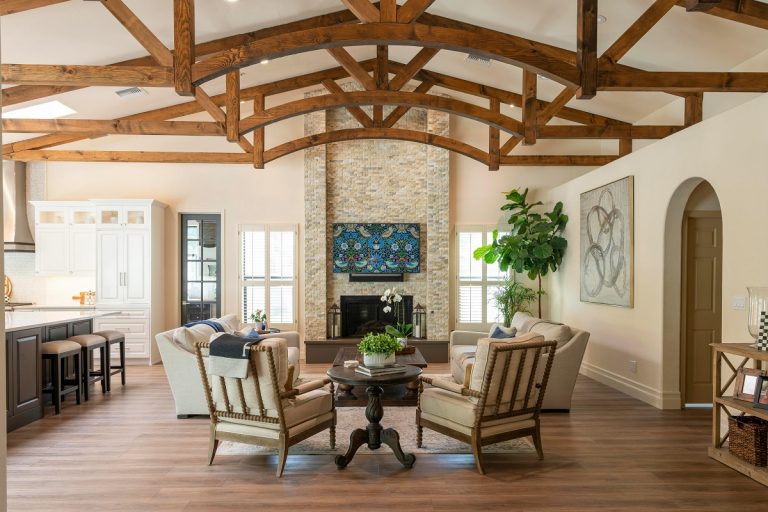

Building a home is lauded as one of the best financial decisions. Homes appreciate every year. It is best to keep up with industry trends to build a home that is still attractive years later. As homes get more expensive, they should provide something of exceptional or timeless value. We dive into the latest in home building industry trends.
Smart Homes

We’ve come to appreciate and rely on our smart devices, which have made our lives more productive and efficient. Naturally, we want to bring this convenience into our homes. This necessity has birthed smart home technology that continues to grow in popularity. With this emerging technology, home automation has become a reality.
The best thing about technology is convenience. Low-cost sensors, cloud computing resources, and wireless communications have become increasingly available. These two facts explain how and why IoT continues to be pervasive in our lives.
Apps like Google Home, SmartThings, and Alexa allow you to remotely control security systems, lighting, and thermostats through phones or tablets. You must install an Internet of Things system in your house to facilitate this control. You could choose to have a multitasking app to control all devices or get several single-tasking apps to control different functions.
As you can imagine, such a setup creates an amazingly seamless home experience. As the technology keeps evolving, every new home builder will seriously consider smart living as one of the unbeatable home building industry trends.
A network of in-built sensors, connected to every device, collect information about everything in your home. With this in hand, you can determine your energy consumption, temperature and humidity levels, any motion detected by digital security cameras, if there are occupants in your home if your doors are locked or not, and water leaks, among other such in-depth data. The apps store data in the cloud, making it easily and remotely accessible to homeowners.
Nest is a smart home app that intelligently controls your thermostat. Changing your home’s temperature settings has never been this easy. Homeowners relish the ability to remotely turn the heat up or down before getting home from work. If you don’t fancy making dinner, you can install and pre-program some applications to prepare your dinner by the time you walk in the door.
Green Building

Studies suggest that buildings consume about 40% of energy and then have 35% of carbon emissions. With the Sustainable Development Goals in the background, the world is moving to create a more habitable environment for future generations.
Reducing carbon emissions has become a global topic in the last decade. We are all tasked to save more energy and resources for the sake of those who come after us. You can incorporate some green home building industry trends in your new home.
You could have a green custom home built, designed, and functioning in a way that reduces its environmental impact or carbon emission. This is made possible by lowering energy and water consumption, using renewable or recycled building materials, and improving indoor air quality.
Adding solar panels to your home system is another positive move towards sustainability. The panels are designed to harness the sun’s power and use it to create electricity and water heating solutions for the home. Most older designs look like big black tiles sitting on top of the roof. Newer models have been built to resemble roofing shingles, making them undetectable among other roofing materials. Chat with your local residential roofing company near you to see what’s possible.
I believe beautiful green walls have popped into your social media timeline at least once. These are vertical living gardens that can be built on any existing vertical surface. Most people use them to beautify dull concrete walls. However, they play a much bigger role in the environment by filtering air pollutants and giving us shade in the summer. Green building is certainly one of the more conscious home building industry trends.
Before you dismiss green building as just another fad that will pass with time, consider these compelling reasons why it is beneficial. For starters, an eco-friendly home shows you care about your environment. Knowing that you are doing something towards protecting it for others will make you feel great.
Cleaning a green home is much easier because everything is sealed tight to keep water out. Less is needed to keep your home neat without water damage like cracks or crevices for dust particles to settle into. The green building will significantly reduce home maintenance costs because the materials used barely require any maintenance. When there are less dirt, Heating, Ventilation, and Air Conditioning systems will run more efficiently.
New Construction Materials

A range of sustainable building materials has flooded the market. Home builders can select from a variety of what’s modern instead of the more traditional materials like brick, wood, or vinyl. These innovations are becoming more available and affordable such lie bamboo for flooring. There are innovations such as aerogel insulation which functions to improve energy efficiency.
Architects are exploring their creativity with these emerging building products by coupling them with responsible building methods. Moreover, construction methods are more innovative and demand new materials and technology to bring them to life. Builders are using light and natural forms more powerfully inside the home. As a result, colors, textures, and patterns are becoming bolder.
Engineered timber is the first new material in these home building industry trends. This concept uses wood products for construction. It includes parallel strand lumber (PSL), laminated veneer lumber (LVL), and glue-laminated lumber (glulam), among other types. Engineered timber has a huge plus over regular wood. It is stronger and more durable, making it perfect for constructing taller structures. Using engineered timber is also a sustainable practice because it helps minimize deforestation.
Using recycled materials is another sustainable home building industry trends. The materials are considerably cheaper and use less energy in their production compared o other materials. They are also eco-friendly because they reduce the landfill waste we need to deal with. Recycled materials include shredded car tires, glass bottles, and plastic jugs. They are used in flooring or home insulation in place of stone, bricks, or concrete. You can turn old tires into building bricks, and shipping containers can be transformed into offices or modular units.
3D printing building materials are probably the coolest addition to the building industry. 3D printing is a process used to deposit successive layers of material to create three-dimensional objects through computer control. Technology benefits the building industry by making construction faster, greener, and cheaper. Small modules can be printed and assembled, which will shorten the construction time.
Engineered Cementations Composite (ECC) are flexible and ductile materials. They are made from sand, steel fibers, cement, and water. It is popular for its durability, which is possible because of its high flexibility, high tensile strength, and compressive strength. This construction material is perfect for developing complex curved structures and shapes. It emits less carbon dioxide because it is made of less cement. Other than traditional concrete, its strength eradicates the need for expansion joints or steel reinforcements.
Reinforcing concrete with graphene is a great way to make it stronger and water-resistant. Graphene is one of the strongest materials scientifically, the same material found in pencil lead. Engineers use nano-technology to suspend shards of graphene in water that we use to mix concrete. This process creates a product 200 times stronger than steel. This is the future of home building industry trends.
Have you heard of self-healing concrete? Well, this is an innovation by a professor from the Netherlands. Henk Jonkers developed this concrete biologically producing limestone to mend cracks that are inevitable in concrete structures. To achieve this, limestone is embedded into concrete during construction. When cracks happen, microbes are activated automatically to fill them.
Builders are turning to more fire-resistant building materials. For example, natural stone supplies have been rising, and types such as granite, sandstone marble, and limestone are gaining popularity. These products do not bend, warp, dent, swell, or splinter, making them highly resistant to harsh weather conditions. This is one of the home building industry trends that will last a lifetime and is worthy of investment.
New Construction Methods
The roofing industry has been installing green roofs to help customers achieve their eco-friendly building goals. These are additions made to the roof of a building for growing flora or plants. Apart from providing shade, these roofs also reduce temperatures on the roof surface and surrounding air. Using solar shingles has been preferred over the more affordable asphalt roofing option due to their durability and environmentally safe characteristics.
Flooring industries have also become more conscious of their choice of materials. A great example is hardwood floor installation, which now incorporates more dark and light stains to make them more interesting detail and even more appealing to the clients. Alternatives available for modern and durable flooring include parquet, reclaimed hardwood, light oakwood, marble, and waterproof SPC rigid-core vinyl. These improvised products look natural, spruce up the home with advanced textures, are safer, and make cleaning much easier.
The home interiors are not left behind in this highly innovative era. Granite countertops have continued to rank at the top of most homeowners’ lists for being the most durable and beautiful. Other great alternatives include laminate, quartz, concrete, or recycled glass. Focusing on the interior and exterior of home building trends creates a uniform and harmonious appeal to your new home.
Open floor plans have been popular since the late 90s. This design includes using fewer walls for separation. For example, the walls could be limited to the kitchen and bathroom while the dining, bedroom, and living spaces blend into one. Their biggest advantage is they allow more natural light into the house, reducing electricity use.
Rising Cost of Business

Harsh economic times have raised the cost of doing business, which has also affected the building industry. To stay afloat, building companies have used equipment rentals to meet their construction needs at a more cost-effective level. Forklifts, storage tanks, generators, and air compressors are the most common items for rent. Companies can effectively minimize their freight carrier costs by relying on rentals. Another reason this is a home building industry trend is that it allows constructors to access equipment with the latest technology.
Real estate agents should be on the cutting edge of industry trends to provide the best advice and identify homes that meet these trends. If you are looking to build a new home, your agent should be able to give you ideas on prime locations to do so. They should use virtual and augmented reality technology to give clients a more amazing experience of home building industry trends. With a reduction in the rental market and an increase in home prices, securing their craft requires they think out of the box and provide more value.
Home building industry trends have also gone into a landscape layout. A landscape designing company has to incorporate technology and innovation in operations to ensure the building matches the layout design. More homeowners are interested in growing their foods, making kitchen gardens more appealing. However, they are still concerned about sustainability, and thus they prefer to use recycled items to construct outdoor furniture or decorations. A quick search online can prove just how dedicated they are. It’s impressive.
Overall
Building industry trends are on a steady rise. Technology has expanded our minds and brought about easier and more affordable innovation in construction. As prices rise, there is demand for value for money, and you cannot go wrong with these industry trends. If it’s time for you to build a new home, call us today, and we will help you incorporate as many ideas as possible.





